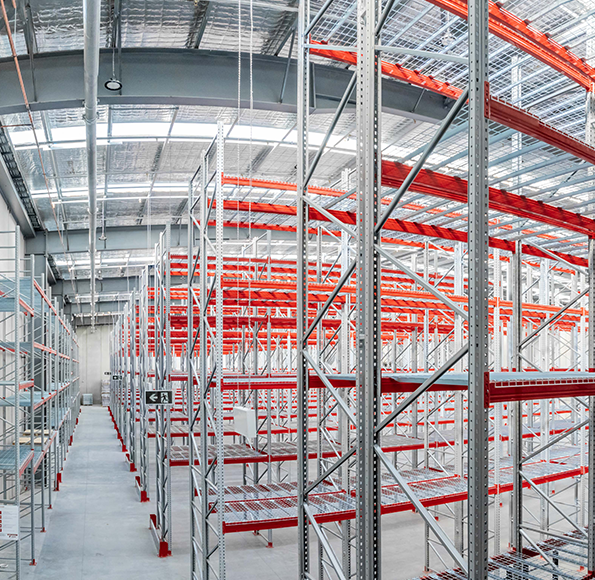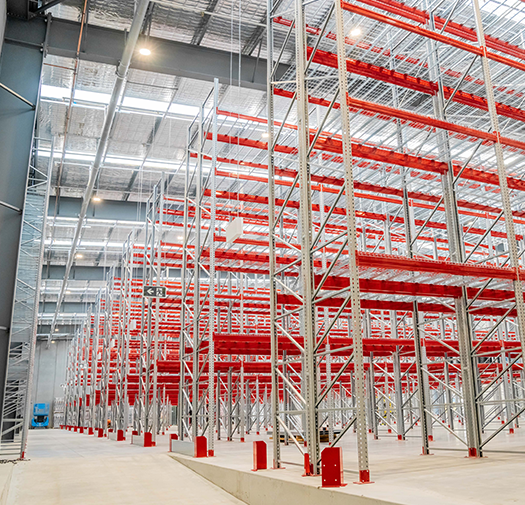


Selective pallet racking is the most popular warehouse storage system in Australia and New Zealand. It provides direct access to every pallet and a clear view of stock, making it an ideal system in fast-paced picking and packing environments. Because of its efficiency, selective pallet racking is also a smart choice for warehouses with multiple SKUs and those with frequent stock movements.
Selective pallet racking is designed for flexibility of space, size, access and speed of warehouse operations. It suits virtually any pallet size and weight, and can be used in conjunction with almost any type of forklift. Operators can access every pallet in the rack without needing to shuffle stock around. This minimises handling times and lowers the risk of product damage, while also improving the safety of personnel.
The open-access structure of selective pallet racks makes managing stock oversight and replenishments easier. It also means faster response times to customer demands, improving the customer experience.
Praised for adaptability, pallet rack systems can be adjusted almost infinitely. Beam levels can be moved for different pallet heights and weights, and bays can be added or switched out as needs change. This versatile structure supports the long-term scalability of a business. Racking can be altered and expanded as your business expands, eliminating the need to upsize the warehouse footprint or overhaul an entire storage system.
It also works well in both wide aisle and narrow aisle configurations. Wide aisle systems offer better access for forklifts, while narrow aisle layouts maximise the use of space in smaller or higher density warehouses.
In warehouse environments where speed and stock visibility are important, a selective pallet rack is still one of the most practical and proven storage systems available. Today, selective pallet racking is used in 95% of all warehouse locations with a floor utilisation of 40%.
Selective pallet racking is a straight forward and cost effective pallet storage system. Able to be used in conjunction with almost any type of forklift, it is ideal where flexibility, easy access and fast dispatch times are critical.

Allows individual access to every pallet, thus achieving optimum stock rotation
Allows for space maximisation yet retains total product accessibility
Is compatible with a wide range of standard materials handling equipment, thereby assisting in the reduction of capital outlay costs
Can be adapted and adjusted almost infinitely to serve virtually any logistic requirement